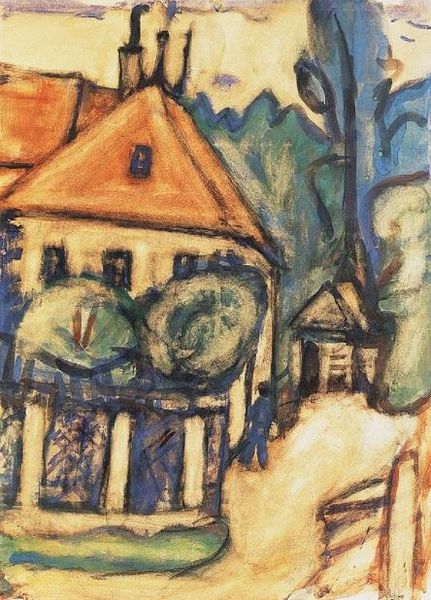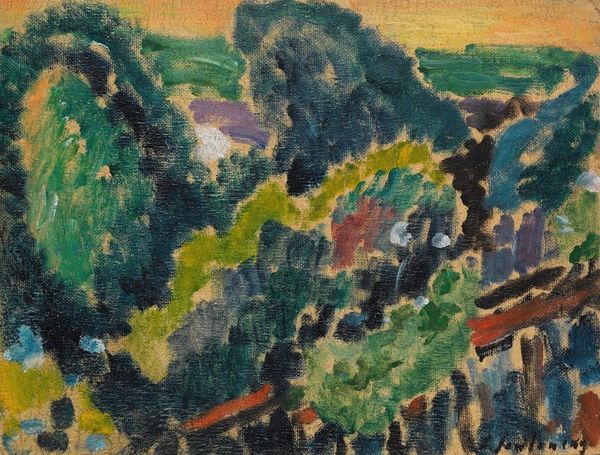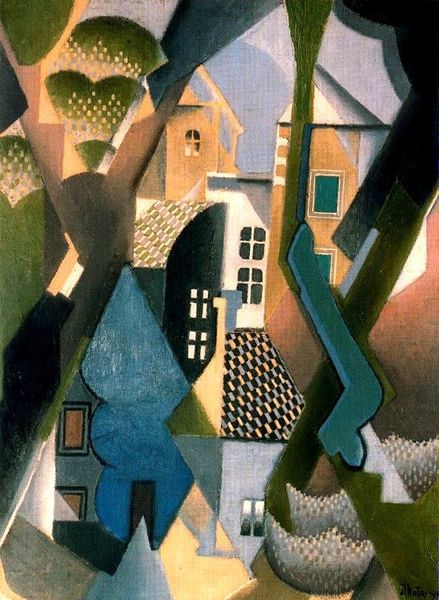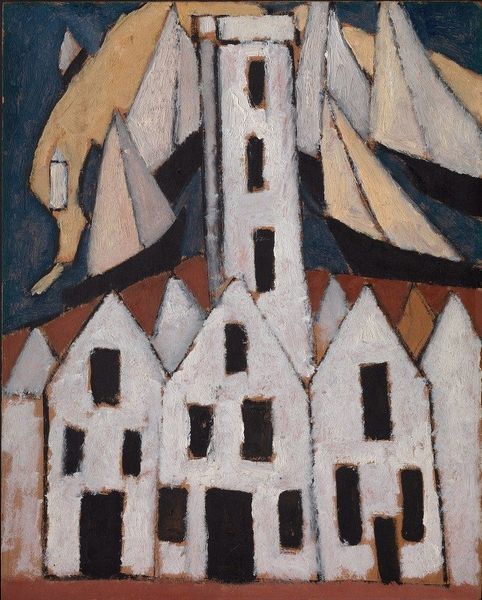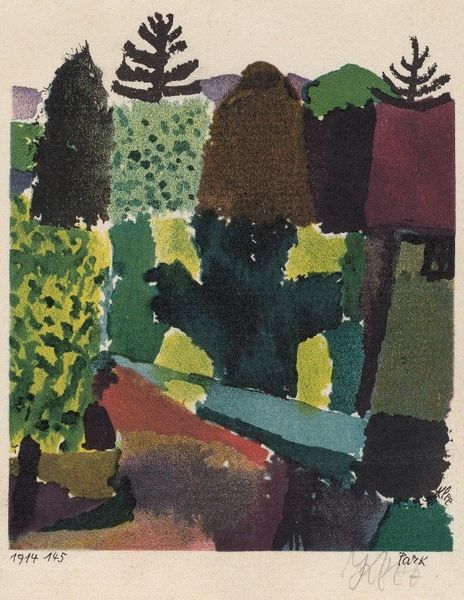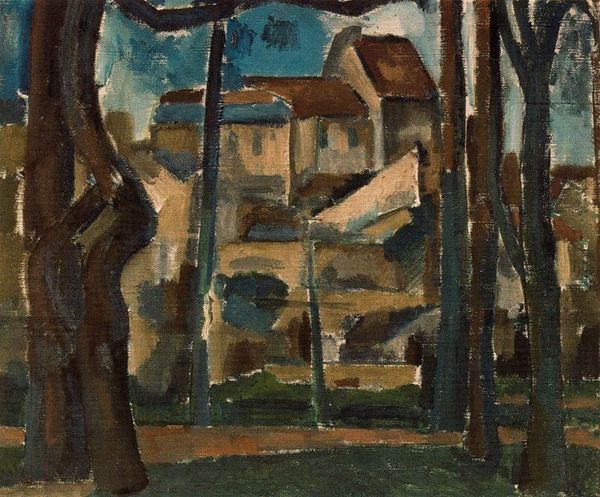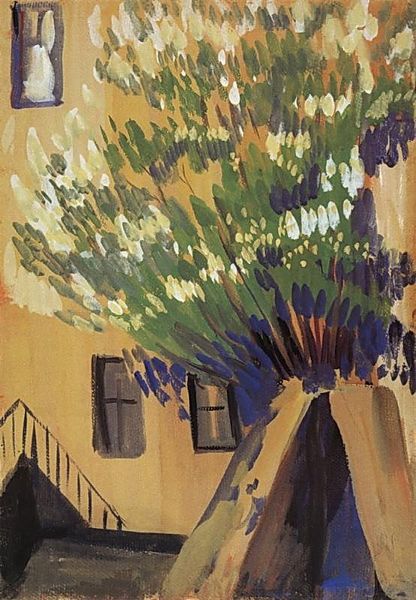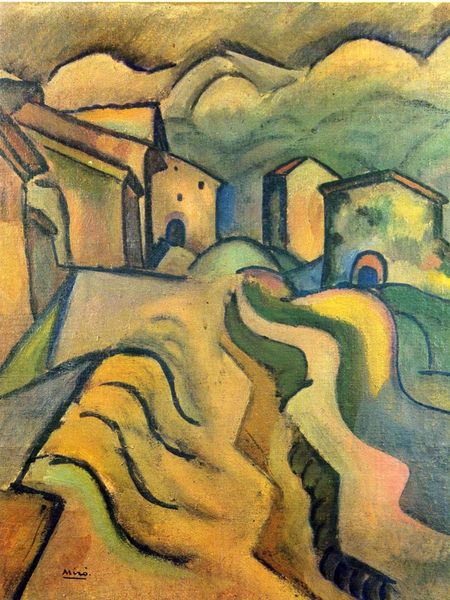
print, woodblock-print
#
art-deco
#
cubism
# print
#
woodblock-print
#
geometric
#
cityscape
Copyright: Public domain
Curator: Here we have Dorrit Black's "Dutch Houses," a woodblock print created in 1929. It showcases a fascinating interplay between Art Deco and Cubist influences, reflecting Black's exploration of modernist styles during her travels. Editor: My first thought? It’s…serene, but in a very structured way. Like a Wes Anderson film set, but make it graphic. I’m getting strong early 20th century vibes. Curator: The printmaking process itself is key here. Black likely used separate blocks for each colour, carefully aligning them to create the final image. The texture of the wood is also really apparent, which adds a layer of depth to the composition. It merges high art aesthetic with the labour-intensive processes that move the piece out of just pure fine art. Editor: It's like she's abstracted the essence of "house" – the pitched roofs, the windows – down to their geometric cores. And that palette! The red-bricks! A touch desaturated to evoke something more nostalgic perhaps? Curator: Precisely. And consider the socio-economic context. The print medium made art more accessible to a wider audience. Black was actively engaging with the idea of art's role in everyday life, not just something for the elite. The houses, too, suggest stability and order during a time of great change and social tension. Editor: It makes me want to re-imagine my neighbourhood in simplified forms! See the hidden angles in the ordinary! What do you feel is the work’s lingering question? Curator: I would have to suggest that Dorrit Black pushes us to consider: can functional and accessible art inspire aesthetic awareness for all, even as we are being sold the idea that art can only be truly comprehended and afforded by a chosen few? Editor: Yes, Dorrit Black’s woodblock “Dutch Houses” has indeed made me question if it’s the labour-intensive element that brings out our emotional accessibility when viewing the artwork.
Comments
No comments
Be the first to comment and join the conversation on the ultimate creative platform.
